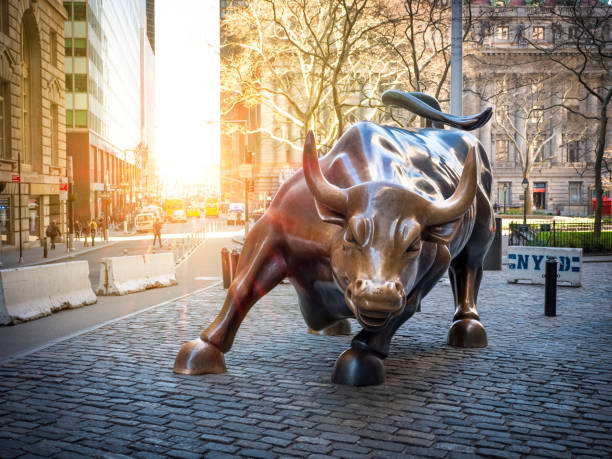One of the worst financial disasters in contemporary history was the 1929 stock market crash. It marked the beginning of the Great Depression, a decade-long economic downturn that affected millions globally. To understand this crash, we need to explore What Started the Stock Market Crash of 1929? its causes, focusing on the speculative excesses, systemic weaknesses, and economic imbalances that culminated in this catastrophe.
The Roaring Twenties and Market Boom
Often referred to as the “Roaring Twenties,” the 1920s saw both cultural and economic transformation in the US. Innovations in industries such as automotive, aviation, and mass production fueled significant economic growth. Consumer goods like radios, refrigerators, and automobiles became widely accessible, creating a booming economy.
This growth extended to the stock market, which became a symbol of wealth and opportunity. Stocks were perceived as an easy way to earn quick profits, and as a result, many Americans began investing. The Dow Jones Industrial Average nearly quadrupled between 1921 and 1929. However, much of this rise was driven by speculation rather than actual economic value.
Speculative Excess and Margin Trading
Speculation played a critical role in what started the stock market crash of 1929. Investors, both seasoned and amateur, increasingly bought stocks with the expectation of continuous price increases. This optimism created a bubble in the market, where stock prices became grossly overvalued relative to the actual performance of the companies.
A major contributing factor was the widespread use of margin trading. Investors borrowed money to buy stocks, often putting down as little as 10% of the purchase price. This meant they were heavily leveraged, exposing themselves to significant risk if stock prices declined. Banks and brokerage firms encouraged this practice, further inflating the bubble.
Economic Imbalances and Overproduction
While the stock market appeared robust, underlying economic weaknesses signaled trouble. A key issue was overproduction. Industries produced goods at a pace that exceeded consumer demand. This surplus caused prices to fall and profits to shrink, particularly in agriculture and manufacturing.
Farmers, who had expanded production during World War I to meet high demand, were especially affected. Once the war ended, demand for agricultural products decreased, leading to a steep drop in prices. Farmers faced mounting debt and financial ruin, contributing to a rural economic crisis that went largely unnoticed by urban investors.
Also Read: Why Did The 1929 Stock Market Crash: How to Identify Warning
Unequal Wealth Distribution
Another critical factor in what started the stock market crash of 1929 was the stark inequality in wealth distribution. During the 1920s, much of the economic growth benefited the wealthy, while the middle and lower classes saw limited income gains. This inequality limited overall purchasing power, creating a disconnect between production and consumption.
As a result, while companies expanded production, a significant portion of the population could not afford to buy these goods. This imbalance created a fragile economy heavily dependent on credit and speculative investment.
Weak Banking System
The banking system in the 1920s was poorly regulated and highly vulnerable to economic shocks. Many banks invested their deposits in the stock market or lent money to speculators, exposing themselves to significant risk. Additionally, there was no federal deposit insurance, meaning that if a bank failed, depositors lost their money.
When the stock market began to falter, banks faced massive withdrawals, leading to a wave of bank failures. The collapse of banks not only wiped out individual savings but also restricted credit availability, further weakening the economy.
The Beginning of the Crash
On October 24, 1929—now known as Black Thursday—the stock market crash started. On this day, panic selling ensued as stock prices started to fall. Despite attempts by major bankers to stabilize the market by buying large amounts of stock, the panic continued.
The real collapse occurred on October 29, 1929, or Black Tuesday. On this day, the market lost billions of dollars in value as a record 16 million shares were traded. Investors, including many who had bought stocks on margin, faced catastrophic losses. Banks that had lent heavily to these investors suffered significant losses as well.
The Role of the Federal Reserve
The Federal Reserve’s policies also contributed to the crash. In the years leading up to 1929, the Fed kept interest rates low, encouraging borrowing and speculation. However, as the market overheated, the Fed raised interest rates in 1928 and 1929 to curb speculation. This policy shift tightened credit, making it difficult for businesses and individuals to borrow money, which further destabilized the economy.
The Domino Effect
The stock market crash triggered a chain reaction that rippled through the economy. Businesses, unable to access credit or raise capital, began to fail. This led to widespread layoffs, further reducing consumer spending and deepening the economic downturn.
International factors also played a role. The global economy in the 1920s was interlinked, and the U.S. was a major creditor to Europe following World War I. When the U.S. economy faltered, it affected European economies, leading to a global depression.
Lessons from the Crash
The stock market crash of 1929 exposed the dangers of speculative bubbles, lack of regulation, and economic inequality. It led to significant reforms in the financial system, including the creation of the Securities and Exchange Commission (SEC) to regulate the stock market and the Federal Deposit Insurance Corporation (FDIC) to protect bank deposits.
Conclusion
In summary, what started the stock market crash of 1929 was a combination of speculative excess, economic imbalances, and systemic weaknesses. The speculative bubble, fueled by margin trading and unchecked optimism, collided with underlying economic vulnerabilities like overproduction, unequal wealth distribution, and a weak banking system. The Federal Reserve’s policy changes and global economic interdependence added to the complexity of the crisis. Understanding these factors provides valuable lessons on the importance of balanced economic policies and robust regulatory frameworks to prevent similar disasters in the future.

